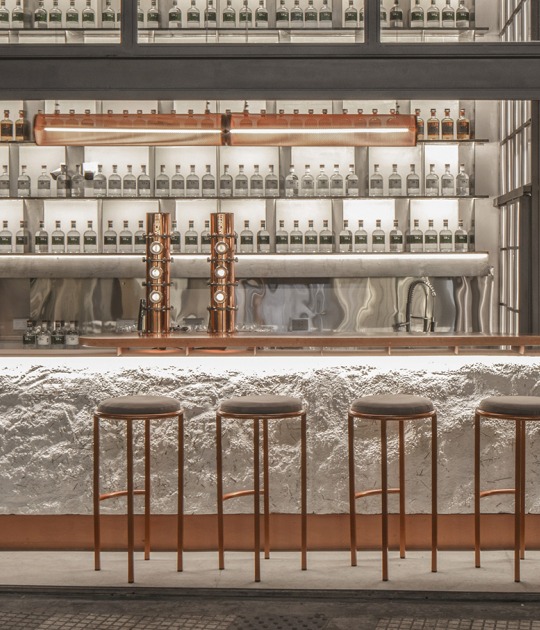The organic clover-like shape of the center features a cantilevered roof characterized by soft, flowing shapes. The twelve meters high that give shape to the building appear to float above visitors, providing shade from the sun, shelter and a space for social interaction, enhancing the connection between people and architecture.

ZGC International Innovation Center by MAD Architects. Photograph by CreatAR Images.
The transparent curtain wall of the façade follows the organic curves of the sculptural form of the building, providing the center with its lightness, transparency and fluidity of fluid transitions between the interior and exterior, creating a perfect integration with the environment, which follows the curves organic aspects of the sculptural form of the building. In addition, a simple interior with clean lines is added that seeks to promote an open and airy environment for the exchange of ideas.
The ZGC International Innovation Center has two giant ETFE membrane skylights, which allow natural light to flood the place, improving the user's experience of the space and light. The simplicity of the interior aims to create user-friendly spaces that enhance social interaction and promote engagement. The integrated lighting project includes adjustable color temperature lights that move along the curves of the building. and converge in the sculpture of the central luminaire, creating a unique futuristic atmosphere. characterized by the use of advanced technologies and a sense of innovation.

ZGC International Innovation Center by MAD Architects. Photograph by ChillShine.
The functional space is distributed in a zigzag shape, with the main area, with a banquet hall and multifunctional room on the first floor, being the main space for events; and a series of smaller meeting rooms and VIP lounges in the basement to meet the needs of meetings of different scales and privacy.
The roof of the building is made up of 2,769 double-curved honeycomb aluminum panels coated with fluorocarbon arranged in different density patterns, with the aim of covering the structure and facilitating the collection of rainwater. At night, lights hidden within the roof slats synchronize with the roof lines. They create a sense of movement, echoing the endless traffic on the city streets, blending even more into the urban landscape. In addition, a historic tree is preserved on the northeast side of the site, integrating it into a sunken patio that creates a quiet space amid the noise of the city.

ZGC International Innovation Center by MAD Architects. Photograph by Arch Exist.
The ventilation system of the ZGC International Innovation Center is hidden under the concrete “veins” of the suspended roof and green roof, giving the building a clean and simple appearance. Using lightweight soils and low-maintenance vegetation on the roof reduces landscape operating costs while meeting roof load requirements, landscape appearance and quality requirements. The center also uses renewable energy sources, such as solar photovoltaic systems and ground heat pumps. It also uses energy-efficient secondary electromechanical equipment to create a zero-energy conference room, reducing carbon emissions by more than 50% compared to surrounding public buildings.
The Zhongguancun Forum permanent building project began in 2020 and the opening took place in August 2022. This same year, the 14th Annual Meeting of the Zhongguancun Forum was held in the new center from April 25 to 29, 2024.

ZGC International Innovation Center by MAD Architects. Photograph by Zhu Yumeng.
Since its establishment in 2007, the ZGC Forum has taken “Innovation and Development” as its central theme, attracting national and international scientists, entrepreneurs and emerging talents to share and discuss innovative ideas on a variety of topics. Over the years, it has evolved into a leading global platform for the future of high-tech innovation, exchange and cooperation.
Ma Yangsong/MAD Architects' project for the ZGC International Innovation Center establishes it as a global focal point for scientific, technological and cultural exchange, serving as an extension of the environment and as a new open space for the city and community.

















































